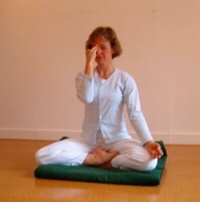Relaxation Techniques

We push ourselves at such a pace these days that feeling stressed can, at times, almost become the normal way to feel. A certain level of stress is necessary because it helps to keep us on the ball, but being under prolonged pressure, and ignoring physical signs such as shaky hands, hyperventilation and a fast heartbeat, is not at all healthy. So if any of these sensations sound familiar to you, resolve to make time every day to relax your body and free your mind of problems.
How Exercise Helps You To Relax:
Exercise doesn’t just tone your muscles, it also eases the muscular aches and pains that go hand-in-hand with stress; it also distracts your mind from the worries that make you tense. Regular exercise – and especially yoga – lifts your mood (remember how good you felt the last time you did some invigorating exercise?) and soothes your mind. As you become fitter, you will find that your ability to cope with the mundane problems that crop up improves.

Yoga – A Good Route To Relaxation:
Yoga is an exercise technique and ancient doctrine based on achieving mental, physical and spiritual harmony. The belief is that when all these elements are in tune with each other, overall health is at a peak. As well as improving joint mobility, suppleness, shape and self-image, yoga can dispel the headaches and tiredness brought on by stress and nervous tension. The practice involves many active principles, but the most popular ones that are used in Western teaching are as follows:
Asanas, or postures: These are held for several minutes at a time and, together with the correct breathing, perfected to give certain physical, spiritual and emotional benefits before each new step is learned.
Pranayama: This is deep, slow breathing which is normally done while sitting – either in a lotus position or on a chair that allows your spine to stay straight. If you find it difficult to sit straight then lie down.
Relaxation: Up to 15 minutes is spent resting (usually lying flat on the floor) after yoga to help your mind and body unwind and recharge. Yoga principles and postures are best learned with a teacher, rather than out of a book.

Pilates – Creating A Relaxed, Confident Stance:
In Pilates, controlled repetitive actions realign and re-educate the body. Mental focus and breathing techniques encourage flowing movements and increased awareness as well as improving body tone. Pilates combines stretches and strengthening exercises and is one of the safest forms of exercise.
Neck And Shoulders – Tension Focus:
Anyone who has ever spent most of the day at their desk, or hunched over a computer keyboard for long periods without a break knows all about the discomfort that stiff neck, back and shoulder “knots” can cause. Our upper torso is usually the focal point for mental and physical stress, and the stiffness this causes can lead to headaches and back pain. One of the best ways to avoid and relieve this type of physical stress is to get up and walk around the room regularly, stretching and loosening your shoulders by circling them backwards and forwards as you go.

Improving Respiratory Awareness:
Our emotional state is reflected by our breathing patterns. When we are under strain or nervous, we tend either to hyperventilate (over-breath) or to inhale short, shallow breaths – a habit that you can break only when your attention is drawn to it. Examine the way you are breathing now: is your breathing pattern regular and steady? If not, take a couple of slow, deep breaths and start again, and this time make a conscious effort to breathe steady, equal calm breaths.
Instant Relaxation:
Stand by an open window and take deep breaths for a slow count of 10 or 12. Then hold your breath for about 10 seconds, and release with a long “aah”. (To begin with, do twice only or it might make you feel dizzy or faint.)

Relaxation Checklist:
If you aware of yourself becoming tense, set aside 10 minutes at the end of each day to relax (or make time in the middle of the day if you need it). The important thing is to run slowly through this progressive relaxation checklist step by step:
Be Aware Of Your Body: Tense every little bit of your body, then make a conscious effort to relax every part. Bunch your toes, then free them, clench your thigh and buttock muscles, then let them relax; pull in your stomach muscles and let them go; hunch your shoulders, then relax them, clench and relax your hands several times.
Monitor Your Breathing Pattern: Take note of how you are breathing: is the pattern slow and regular? If not inhale deeply and slowly, hold your breath for a couple of seconds, then release it again, letting your body relax completely as you exhale.
Correct Your Posture: Sitting, standing and walking badly can also produce knots and tightness in the muscles in your back, neck and shoulders. It is vital that you study the way that you sit, stand and move and work on correcting any postures that cause tension in your body.